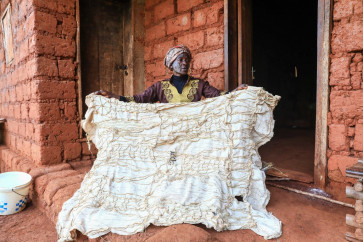Popular Reads
Top Results
Can't find what you're looking for?
View all search resultsPopular Reads
Top Results
Can't find what you're looking for?
View all search resultsCameroon's 'cloth of kings' torn over future
Ndop's richness and distinctive motifs -- often animals or geometric shapes -- are now being threatened by crude rip-offs.
Change text size
Gift Premium Articles
to Anyone
Wambesso Fankam stands out elegantly from the crowd at a funeral ceremony in western Cameroon.
As a prince, he's among a select few who are traditionally entitled to wear an eye-catching fabric of vivid indigo with intricate white patterns.
"It's an ndop, not everyone can wear it," he said with pride, to the beat of tam-tam drums and the balafon, a type of xylophone, in the western town of Batie.
The ceremonial cloth was once the preserve of chiefs, dignitaries and members of secret societies in the central African country.
But the culture around it is now being threatened by cheap imitations and crude rip-offs.
Ndop's distinctive motifs -- often animals or geometric shapes -- are drawn on cotton fabric then embroidered with raphia before the material is dyed blue.
Its richness is down to the many different combinations of symbols that can be designed on the ndop.



















